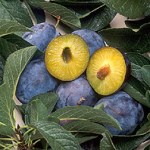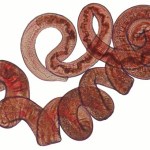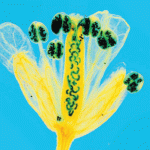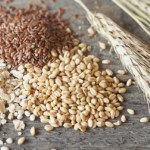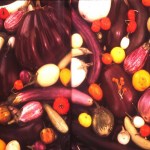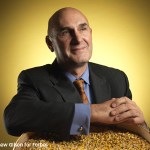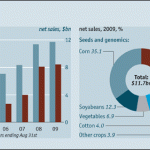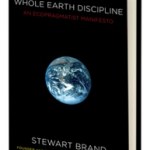genetics and society
Clearly, transparency is critical but how much does the source of funding matter if it is fully disclosed?
Among the scientific community, government funded research is generally considered trustworthy and as a benefit for the public good. Still, that view is not universal. I have been accused of "taking government funding" for my research (which is funded entirely from government sources: DOE, NIH, USDA, and NSF). The person asking clearly felt that the US government was not to be trusted and therefore the research funded by the US government was not to be trusted. But what is the…
The World Science Festival, is a five day-long extravaganza of science in New York City that is coming up this year on June 2-6. The World Science Festival (now in it's third year) is not only for adults interested in science society- it is for kids, too. That why I will bring my 9 year old daughter with me. She is clamouring for high heels to wear to the opening night gala honoring Stephen Hawking. On Sunday, the heels will come off for some fun at the Festival Street Fair, featuring Discovery Theater and Author's Alley.
On Friday evening, I will participate in a panel called Food 2.0:…
The number of people on Earth is expected to shoot up from the current 6.7 billion to 9.2 billion by 2050. How will we feed them? If we continue with current farming practices, vast amounts of wilderness will be lost, millions of birds and billions of insects will die, and farm workers will be exposed to more and more chemicals. And still, we will not have enough food. Clearly, there must be a better way.
Some scientists and policymakers suggest that genetic engineering, a modern form of crop modification, will dramatically reduce our dependence on pesticides, enhance the health of our…
This Op-Ed just published today in the NY TImes.
Here it is with links and a few edits.
A REPORT by the National Research Council last month gave ammunition to both sides in the debate over the cultivation of genetically engineered crops. More than 80 percent of the corn, soybeans and cotton grown in the United States is genetically engineered, and the report details the "long and impressive list of benefits" that has come from these crops, including improved soil quality, reduced erosion and reduced insecticide use.
It also confirmed predictions that widespread cultivation of these crops…
Tonight's dessert is plum cake:
Tante Lissy's Flaumen Kuchen (Plum Cake)
1 c Butter
1 c Sugar
1 Egg
2 tsp Almond extract (or vanilla)
1 tsp Salt
1 c White fl our
1 c Barley
10 Plums, pitted and cut in half
2 Tbsp warmed apricot jam
1. Beat together butter and sugar. Add in egg, almond or vanilla extract,
and salt.
2. Mix in fl our and barley to form a dough.
3. Pat 2/3 of the dough into an ï¸-inch pan with removable rim. Arrange plums,
cut side down, in pan.
4. Lattice rest of dough on top; drizzle with apricot jam.
5. Bake at 350°F for 45 minutes.
I saved some Santa Rosa plums last summer…
For a short 5 minute tour of Bill Gates tackling the controversy of GE crops, please see the blog ERV. Thanks for the plug ERV
If you have 45 minutes, watch the entire video here. Bill is serious, sincere and a good speaker with important concepts to convey:
The video starts about 11 minutes in.
I try not to travel in the spring. Instead of the stale air of the airplane, I try to get out to the mountains, the beach, the garden or to the nearby foothills.
Last weekend my daughter and I (who is 8 years old today), went for a walk. I thought she was strong enough to do the 5 mile hike in the Stebbins Cold Canyon Preserve so off we happily went. As we started up the VERY steep hill, her trust began to dissipate. Then the inevitable "I want to go home".
I definitely did not want to go home. More than that, I did not want her to want to go home.
"Look, a soap plant, the people that were…
Check out this great post by Mary M on biofortifed. In it she reviews a new research paper that describes how the use of Bt could potentially save the lives of millions.
You can download a video about the researchers and their work here.
From Mary's post: "For some people, a great deal of the conflama around genetically-engineered (GE) crops has to do with the presence of a pesticide in the plant material--mainly the Bacillus thuringiensis or Bt protein--rather than coating the surface of the plant as organic Bt sprays or chemical-style pesticides would. No matter how many times I explain…
Science Magazine this week published the winners of this year's International Science and Engineering Visualization Challenge.
Self-Fertilization: Heiti Paves and Birger Ilau, Tallinn University of Technology
Within its tiny white flowers, thale cress (Arabidopsis thaliana) does what most plants avoid: It fertilizes itself. Heiti Paves of Tallinn University of Technology in Estonia took this photograph of the flower with its pollen grains and ovaries stained blue to show the process in action. From the six pollen heads, the grains grow thin tubes toward the bean-shaped ovaries in the flower…
Thank you Bill Gates for your work on behalf of farmers and.... for blogging on our book, Tomorrow's Table!
If you don't have time to read the full reviews, here are a few excerpts:
"This is an important book for anyone who wants to learn about the science of seeds and the challenges faced by farmers... I think anyone who reads this book will be convinced of the authors' sincerity and intelligence - even if, like me, you never try any of the cool-sounding recipes...
I gained an understanding of the history of organic farming and learned about some of the very clever ways organic farmers…
Eggplants are found in many colors: green, white, purple, yellow, even striped. They are shaped like cucumbers or apples. They are eaten in Italy as melanzane alla parmigiana, in France as ratatouille, and in the Middle East as baba ghanoush.
My husband Raoul usually grows Imperial Black Beauty, Rosa Bianca, and the hybrids Beatrice and Nadia. We cook them shortly after harvest:
Spicy Eggplant
2 Eggplants, diced into 1/2" cubes
3 tbsp Olive oil
1 Clove of garlic, smashed and chopped
1/2 tsp Chile flakes
1. Sauté smashed and chopped clove of garlic in the olive oil.
2. Add the chile flakes…
Last year, I attended a Food Symposium at the Mountainfilm festival in Telluride.
Many of the speakers offered a simple solution to feeding the world in the face of a population that is expected to grow to 9.2 billion by the year 2050: Eat local.
But how much impact will the "locavore" movement really have on sustainable food production?
Not much, says James McWIlliams in his latest book "Just Food". "Eating local is not, in and of itself, a viable answer to sustainable food production on a global level."
"We should not delude ourselves into thinking that the relatively easy decision to…
In an interview with The Times, Gordon Conway, Professor of International Development at Imperial College London and a former government adviser said that the ban on organic farmers using GM crops was based on an excessively rigid rejection of synthetic approaches to farming and a misconception that natural ways were safer and more environment- friendly than man-made ones.
I completely agree with Gordon Conway that it makes sense for farmers to use the most powerful tools available to make their production more sustainable. Still, I think it unlikely in the short term that organic farmers…
Here is another interesting story about Monsanto, in Forbes magazine. The article manages to avoid calling Monsanto all good or all bad and instead looks at what Monsanto means for the future productivity of the global food supply.
Thanks to Alex Palazzo for alerting me to the article The Paranoid Style in American Science by Daniel Engber of Slate.
This is a three-part series on radical skepticism and the rise of conspiratorial thinking about science. Unfortunately it is all too familiar. As Alex notes, the series discusses how certain people (i.e. climate skeptics, the ID movement, and the tobacco industry) have cultivated a notion of super-skepticism in an attempt to discredit current scientific consensus. Sadly, crop genetic engineering has also often been the target of such attacks.
The book I wrote with my husband…
The word is spreading- we can feed the world without damaging it, if we can entertain some new ideas.
Check out Paul Voosen's article in the NYT and let me know what you think.
On this blog, I will no longer be attempting to explain the difference between genetic engineering and molecular breeding. Instead I will simply refer those interested to Paul Voosen's fine article on the subject published in Scientific American and the New York Times today.
If you are a poor farmer in China, do you care if Monsanto dominates the seed industry in the US?
Apparently not. Several recent reports indicate a rapid launch of GE crops in the less developed world- independent of the US corporate seed industry.
The first news story, reported in the Wall Street Journal and by Reuters is that China has approved release of the worlds first genetically engineered rice. The Bt rice, which was developed by China's Huazhong Agricultural University, is predicted to reduce the use of insecticides by 80 percent while raising yields by as much as 8 percent. This is…
One of the pleasures of reading Stewart Brand's new book, "Whole Earth Discipline", is that when it comes to managing the Earth's ecosystem, he is unconstrained by conventional wisdom.
In a break with many old-school environmentalists, Brand argues that the established Green agenda is outdated, too negative, too tradition bound, too specialized, too politically one-sided to address the scale of environmental problems that we face today.
Who better to challenge the rigidity of the long-respected environmental movement than the distinguished writer, lecturer and author of the classic Whole…
